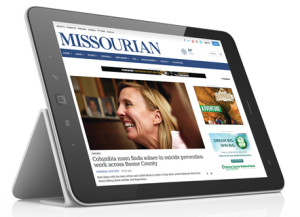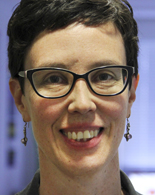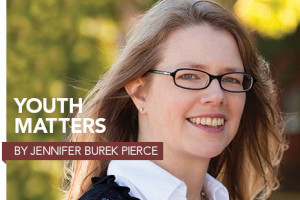
Much of the national public conversation around digital content and libraries has focused on ebooks from large publishers. Over the past few years of advocacy, the American Library Association (ALA) and libraries have made significant progress in improving library access to the ebook catalogs of trade publishers and improving the customer experience of using these collections (see articles by Carolyn Anthony and Micah May and James English).
At the same time, ALA and libraries have been exploring additional options for empowering our users to discover and publish digital content, considering privacy and preservation concerns, and expanding the lens of focus to other forms of digital content. The most recent round of John S. and James L. Knight Foundation challenge grants intersects in several of these areas.
In fall 2014, the Knight Foundation asked: “How might we leverage libraries as a platform to build more knowledgeable communities?” The foundation was “seeking projects that build on the transformational power of libraries and use their ideas, principles, and assets in innovative ways to help people learn about the world around them and engage in the places they live.” With nearly $3 million available, the challenge closed with 676 applications and 46 finalists and ultimately funded 22 projects—several of which intersect with improving access to digital content and platforms.
“These projects are experimental and ambitious,” said Chris Barr, media innovation director at the Knight Foundation. He added that if some of them are seeded, people will try new things in their own spaces. “That’s the spirit of the prototype fund—let’s quickly try something,” he said. “It can fail, but let’s make sure we can learn as we do it. We’ll iterate and try something else in the process. The pace has changed with the internet, and it demands we work faster and smarter in trying new things.”
The projects also demand and reflect new levels of collaboration among libraries and library consortia, software and content developers, disciplines, and individual community members.
GITenberg
The most directly relevant project to ebook access and libraries may be GITenberg, which intends to help libraries use and maintain Project Gutenberg’s (PG) 45,000 public domain ebooks to serve their communities—with GitHub, a code-sharing and hosting platform. Past member of the ALA Digital Content Working Group (DCWG) and founder of Unglue.it Eric Hellman (see his article) is a project lead.
“A strong team needs to play good defense and good offense. DCWG has done a masterful job of playing defense—keeping libraries relevant and strong in the face of a publishing industry that wasn’t thinking much about the consequences of its approach to ebooks,” Hellman said.
“You can think of GITenberg as one player working on the offensive game—bringing the strengths of libraries to new games and new playing fields. The public domain books that are the focus of GITenberg don’t have a fixed rulebook hammered down by publishers. They belong to all of us, and we have the opportunity to help them shine in digital form by taking care of them, together.”
PG offers 45,000 public domain ebooks, yet few libraries currently use this collection to serve their communities. According to GITenberg’s proposal, “Text quality varies greatly, metadata is all over the map, and it’s difficult for users to contribute improvements.” The project seeks to make PG books more easily ingestible and understandable to library catalog systems and workflows by sustainably producing MARC records, integrating attractive book cover images, and working to make a source control system for the books more friendly to librarians and their patrons.
Hellman notes that one key challenge for libraries in creating access to digital content is that “the library world has depended on vendors to make things for them.” Building new information environments is similar to making movies in that it requires a coordinated cast of players (e.g., artists, writers, actors, set designers) to create success, Hellman said. “It can’t just be a software developer or cataloger—that won’t get you very far. We need all kinds of talents coming together. Our biggest challenge will be to figure out how to translate a software engineering workflow (GitHub) into a library-friendly workflow. That’s where we particularly need people who don’t know software engineering to help us.”
Building new information environments is similar to making movies in that it requires a coordinated cast of players (e.g., artists, writers, actors, set designers) to create success. . .
GITenberg is building on work by groups such as PG, Distributed ProofReaders, and the Open Source Software community, as well as exchanging ideas with New York Public Library’s Library Simplified project, the Internet Archive, and the broader Unglue.it team. Librarians can learn more and get involved through the GITenberg Google group.
Journalism Digital News Archive
 On the preservation front, the Journalism Digital News Archive (JDNA) is working to develop a replicable model for preserving and establishing sustainable access of born-digital news content. In line with James Neal’s manifesto in this issue, the University of Missouri (UM) Libraries and Donald W. Reynolds Journalism Institute (RJI) are beginning to act in saving the “first rough draft of history” by partnering with the Missouri Press Association, Newz Group, Investigative Reporters and Editors, and the Center for Research Libraries.
On the preservation front, the Journalism Digital News Archive (JDNA) is working to develop a replicable model for preserving and establishing sustainable access of born-digital news content. In line with James Neal’s manifesto in this issue, the University of Missouri (UM) Libraries and Donald W. Reynolds Journalism Institute (RJI) are beginning to act in saving the “first rough draft of history” by partnering with the Missouri Press Association, Newz Group, Investigative Reporters and Editors, and the Center for Research Libraries.
The project and funding of a shared position between the UM Libraries and the Journalism Institute began with loss—namely 16 years (1986–2002) of digital news and photos from the Columbia Missourian. Unlike content digitized by scanning analog media, born-digital has no physical surrogate to serve as a fallback. A recent survey by RJI found that 27% of US newspapers have experienced significant losses of news content. Smaller newspapers, often in rural or minority communities, are more vulnerable due to limited resources or expertise for saving their content. The disappearance of news, birth announcements, obituaries, and feature stories represents a loss of history and cultural heritage.
The pilot project has two parts. In the first three phases, JDNA will undertake research to understand the markets for news content and determine the nature of the content available from the small newspaper content creators. This information will determine the relationships the project builds and the systems needed to collect, process, market, distribute, and monetize the news content during part two. The second part will include marketing the pilot to a broader consortium of newspapers to increase participation, thus testing the full operation of the model, and developing competitive revenue streams to ensure its sustainability.
“I don’t know if we’re naive or gutsy, but most people just give up [on a project this big],” said Edward McCain, digital curator of journalism at UM. “There are issues with publishers and copyright, legal questions, lack of awareness of the problem and technical tools needed, network security, lack of standards, and more. But I have a feeling that this is the right time for us to be addressing this, with Knight coming in and other government entities beginning to see this as a tsunami. Otherwise, we are blithely throwing away our heritage into a black hole.”
The Knight News Challenge can be seen as a small “venture capital” fund for seeding innovation at a time when the speed of technology change demands more and faster experimentation. The foundation invites us to consider how libraries might work together and with other technology partners to develop our own solutions to barriers we see impeding digital opportunity in our communities. Beyond a single challenge (or really a series of challenges related to developing more informed and engaged communities), the Knight strategy offers a learning opportunity for other foundations and institutions to consider new strategies and approaches for prototyping and scaling promising projects. Many states, for instance, use a similar model for leveraging Library Services and Technology Act funding to underwrite local library technology innovation, as well as statewide collaboration and scalability. How can we apply this thinking more broadly and develop a pipeline to accelerate diffusion and sustainability for successful pilots?
One place everyone can start is to learn more about and consider participating in one or more of the Knight-funded library innovation projects at newschallenge.org and through programs planned for the 2015 ALA Annual Conference in San Francisco.



